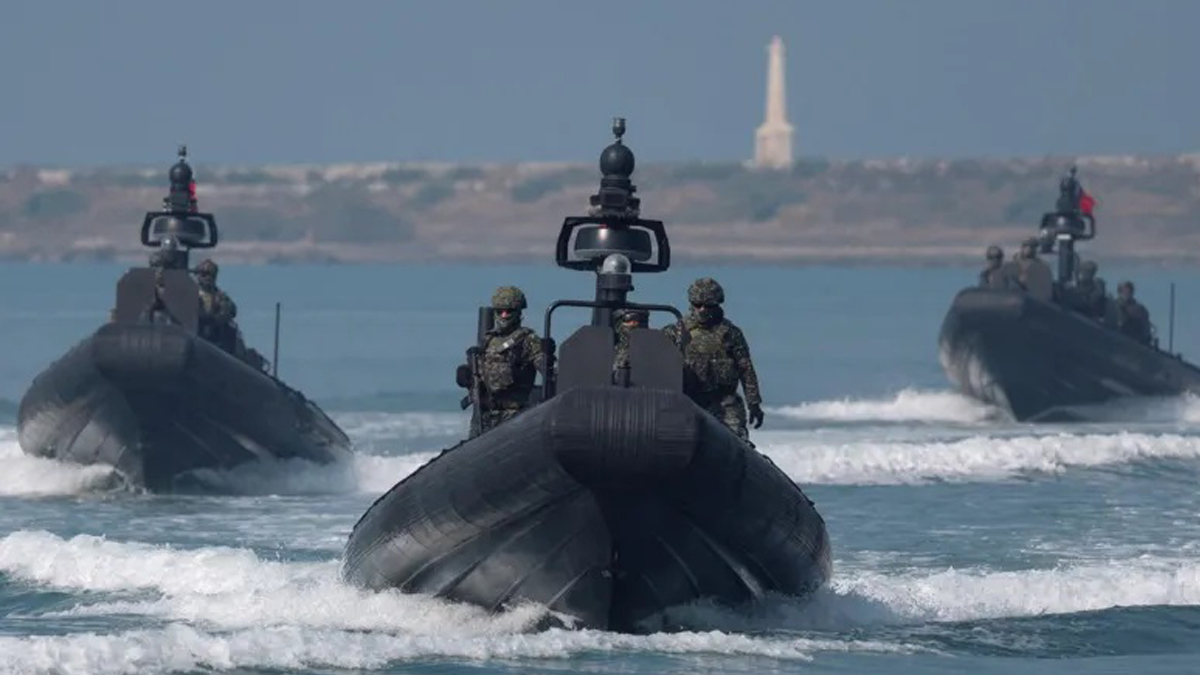China is preparing an armada of ferries and civilian vessels to invade Taiwan as Beijing steps up its pressure campaign against the island nation. Despite lacking sufficient amphibious landing craft for a large-scale invasion, the People’s Liberation Army (PLA) plans to utilize civilian vessels, including dozens of roll-on, roll-off ferries capable of transporting hundreds of armored vehicles each.
“Amphibious landings under fire are among the most difficult of military maneuvers,” said Ray Powell, the director of SeaLight, a Stanford University project focused on grey zone activities in the South China Sea. Although civilian ferries would typically be poor choices for such missions, they could be used to transport troops en masse across the Taiwan Strait after destroying coastal defenses, or to overwhelm the island’s military with sheer numbers, he explained.
Beijing launched two days of military drills in the waters around Taiwan on Thursday as a “strong punishment” for “separatist acts” following Lai Ching-te’s fiery inauguration address in Taipei earlier this week. This marks the third set of exercises encircling the island in the past two years.
“We urge China to exercise self-restraint and stop undermining peace and stability across the Taiwan Strait and beyond,” Taiwan’s Ministry of Foreign Affairs stated.
China regards democratic Taiwan as part of its territory and has vowed to bring the island under its control, possibly by force. US intelligence believes that Xi Jinping has ordered the PLA to be ready to take the island by 2027. In the meantime, Taipei has had to contend with a campaign of “grey zone” activities, including frequent cyber-attacks, military jet incursions, and harassment by Chinese vessels.
Taiwan’s military, though vastly smaller than China’s, benefits from formidable mountainous terrain and the challenging 110-mile-wide Taiwan Strait. The Chinese navy, already boasting the world’s largest surface fleet, has also built numerous dual-use vessels for both peacetime and wartime activities.
Over a decade ago, Beijing issued technical guidelines to shipbuilders to ensure many civilian vessels could be used for military purposes. According to a report from the US Naval War College’s China Maritime Studies Institute, China has integrated its ferries, tankers, and container ships into its military command structure.
Chinese state media has highlighted these efforts, often celebrating the participation of ferries in military exercises. For instance, the 135-meter Bang Chui Dao joined military exercises in 2019, and the 164-meter Bohai Pearl was praised in 2021 for its potential to transport troops on a large scale in amphibious landing missions. The Chang Da Long, a civilian ferry capable of carrying enough heavy tanks and vehicles for two mechanized infantry battalions, was described as “dressed in a civilian shell, but it has a military heart.”
Tom Shugart, an analyst at the Center for a New American Security, estimated in 2022 that China’s civilian vessels could significantly increase the PLA’s capacity to transport military materials, enabling the movement of about 300,000 troops and their vehicles across the Taiwan Strait in about 10 days. He advised both Taiwanese and American intelligence communities to monitor China’s civilian shipping closely.
The integration of civilian ferries into military plans reflects China’s policy of military-civil fusion, where civilian assets are integral to national security efforts. This complicates defense planning, as it becomes challenging to discern whether passenger ferry movements are part of a military buildup.
“There is nothing concealed about the Chinese military build-up,” said Alessio Patalano, professor of war and strategy in East Asia at King’s College London. “Including these assets represents a significant complicating factor for those planning defenses.”
China’s intentions are clear, despite the complexities introduced by its use of civilian vessels in potential military operations against Taiwan. (Input from The Telegraph)



Comments